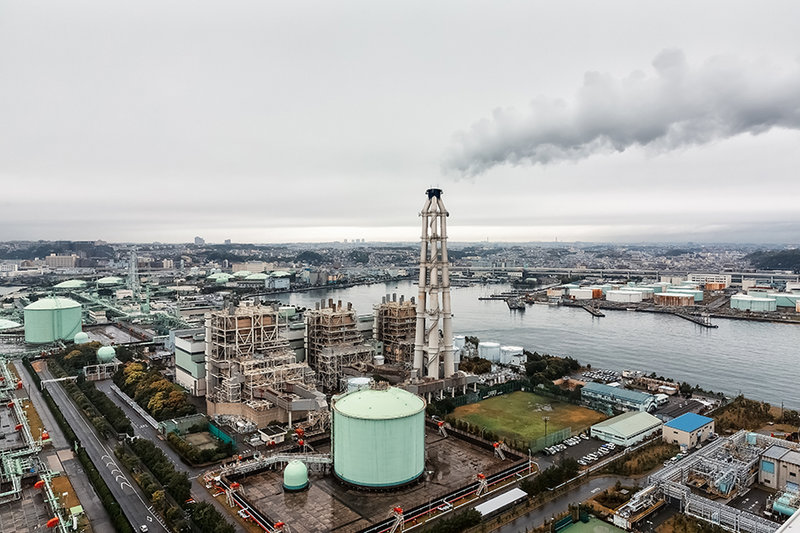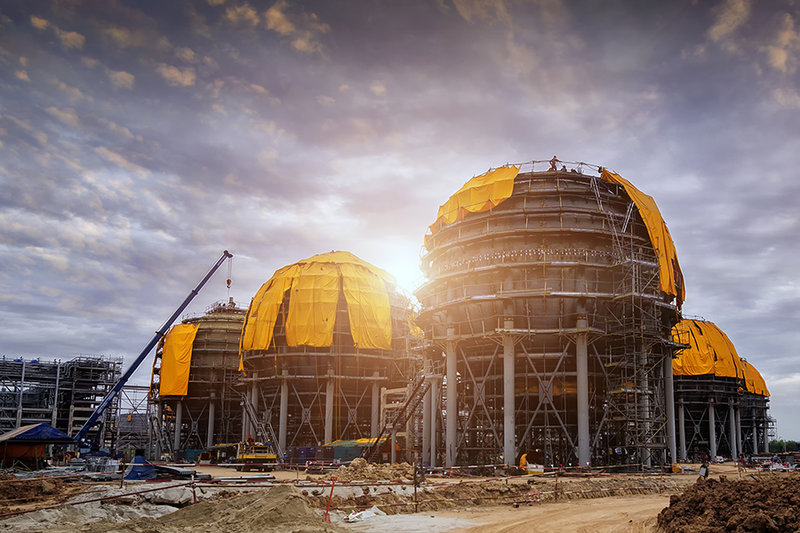fuels
Spotlight on Japan: an emerging LNG bunkering hub for shipping
A new report recently concluded that Japan has the potential to become a major international LNG bunkering hub. What are the strategic moves that can put Japan ahead of the game in the LNG transition? Eva Grey reports
in april this year,
a report published by the International Transport Forum (ITF), part of the Organization for Economic Co-operation and Development (OECD), identified Japan as a key future liquefied natural gas (LNG) bunkering hub, with great potential for growth.
In light of tightening environmental regulations, LNG has become one of the emerging fuels for maritime and coastal shipping, with savings of NOx, SOx and particulate matter of up to 85%, 95% and 100% respectively, compared to conventional fuels.
Its popularity is expected to grow particularly after the International Maritime Organization’s (IMO) Marine Environment Protection Committee (MEPC) adoption of a ground-breaking strategy that ensures the shipping industry must cut its greenhouse gas emissions by at least 50% from 2008 levels by 2050.
In April, shortly after MEPC’s decision, Japan came under fire from NGO InfluenceMap, which accused it of “using their economic influence over open registries such as Panama to push against ambitious climate policy”.
However, following the Fukushima nuclear disaster of 2011, Japanese national policy turned instead to alternative sources of energy, particularly LNG. This led to the present situation, where Japan is the world’s largest importer of the fuel, both by capacity and import volumes, albeit with strong competition from China trailing not far behind in second place.
Its dominant position is not expected to change anytime soon, and given the Japanese Government’s trajectory and strategy, Japan is now seen as Asia’s top contender for LNG ship bunkering facilities.
Image courtesy of VladSV / Shutterstock.com
An overview of LNG adoption
According to ITF’s report, there are currently 118 LNG-fuelled vessels in the world. While this makes up only a small part of the world fleet, this number is set to almost double by 2020, judging by ship order data.
However, the widespread adoption of LNG as a shipping fuel is heavily dependent on available bunkering facilities. These are, at present, fairly scarce and unevenly spread out, with the largest concentration in Northern Europe, followed by facilities in the planning stages lined up for the rest of Europe, North America and Asia.
The widespread adoption of LNG as a shipping fuel is heavily dependent on available bunkering facilities
Even though Japan isn’t necessarily positioned at the heart of the main maritime trade flows, the report points out that its slightly unfortunate placement doesn’t lower its chances to become an important LNG bunkering hub. There are currently 40 LNG terminals on Japan’s coasts, of which four are under construction.
“Japan bases itself on existing technology, knowledge and experience in handling LNG,” the report reads.
Its growth in this department is actively pursued by strategic government policies. In 2017, the Japanese Ministry of Economy, Trade and Industry (METI) announced joint public and private finance of around $10bn to support Asian LNG demand, as well as pledging to provide human resources and skills development for at least 500 people working or aiming to work in the LNG sector.

Image courtesy of Drop of Light / Shutterstock.com
Svein Kleven is senior vice president of engineering and technology for Rolls-Royce. Image courtesy of Rolls-Royce
Port of Yokohama: a rising star for LNG
The biggest efforts are concentrated in and around the Port of Yokohama, a large diversified port, which acts as a hub for East Japan. The port enjoys close proximity to nearby LNG infrastructures, such as the Negishi and Ogijima terminals, as well as Higashi-Ogishima, Sodegaura and Futtsu within the larger Tokyo Bay area.
Since August 2015, a government-subsidised LNG-fuelled tugboat called Sakigake has been operating both at Yokohamaand Kawasaki ports, with a second one expected to operate in Osaka Bay from April 2019.
An LNG-fuelled tugboat has been operating both at Yokohamaand Kawasaki ports
In June 2016, a three-part feasibility study commissioned by Japan’s Ministry of Land, Infrastructure, Transport and Tourism (MLIT) studied the potential to develop a bunkering hub at the Port of Yokohama, looking both into truck-to-ship and ship-to-ship bunkering options, encouraging more collaboration between private enterprises, the national government and port management bodies.
Four months later, these efforts were further strengthened by the signing of an international Memorandum of Understanding with port authorities from seven countries, with the aim of harmonising standards and specifications related to LNG bunkering to incentivise uptake.
“Through the operation of the world’s largest fleet of LNG carriers, the introduction of the world’s first dedicated LNG bunkering vessel, and everyday operation of the LNG-fuelled vessels, the technical capabilities and knowledge of Japanese maritime cluster has been growing, giving Japan enough potential to be able to lead the formulation of the international standards for LNG bunkering,” MLIT director-general of the Ports and Harbours Bureau Takeshi Nakazaki said at the time.

Image courtesy of jan kranendonk / Shutterstock.com
Lingering uncertainties
Despite the gradual rise in LNG demand, and Japan’s clear enthusiasm to become an early adopter and leader, its future as a shipping fuel is still uncertain.
A new report by campaign group Transport & Environment, which focused on Europe, branded LNG an expensive “distraction” for the shipping sector, claiming that it can deliver at best a 6% reduction in ship greenhouse gas emissions by 2050 compared to diesel.
[LNG] can deliver at best a 6% reduction in ship greenhouse gas emissions by 2050
“These meagre emissions savings would likely be cancelled out by the growth of maritime trade,” the report concluded. It also warned that if other promising zero-emissions technologies such as hydrogen, ammonia and electric propulsion were to gain ground in the years to come, then significant LNG assets such as feeders, barges and storage tankers would likely become stranded by 2050.
Nevertheless, when looking to leave behind the ubiquitous fossil fuels, it is LNG that stands out as a clear option for mariners. Japan’s strategic importance as a key bunkering hub for Asia leaves little room for doubt, as the ITF concludes: “Given its current level of infrastructure, experience and geographical position, Japan will most likely be able to secure a competitive advantage vis-à-vis other Asian ports that are developing similar LNG bunkering facilities.”